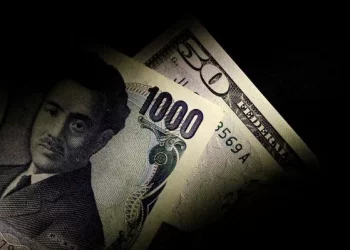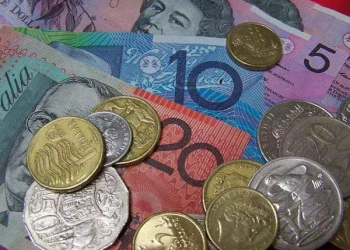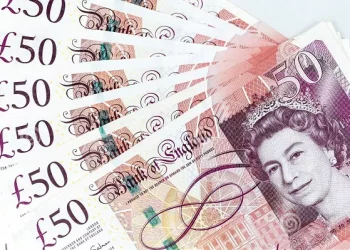The world of numismatics and currency collecting can be both fascinating and confusing, especially when dealing with coins from different historical periods. One coin that often comes up in discussions about precious metals is the Mexican Cinco Peso coin. This particular coin has historical significance and contains silver, which adds to its value for collectors and investors alike. The question of how much silver is in a Cinco Peso, however, is not a straightforward one. It depends on various factors, including the specific year of minting, the coin’s design, and the currency system in place at the time. In this article, we will explore the history of the Cinco Peso, its silver content, and what collectors and investors should know when evaluating these coins.
Brief History of the Cinco Peso
The Cinco Peso coin is part of Mexico’s rich history of coinage. The term “Cinco Peso” refers to a coin with a face value of five pesos. Over the years, different versions of this coin have been issued by the Mexican government, with some featuring significant silver content, while others are made of other metals or alloys.
Historically, Mexico has been one of the world’s largest producers of silver, and its coinage reflects this. The Cinco Peso coin was initially introduced in the 19th century, but it became particularly well-known in the 20th century during the 1940s. During this period, the coin became synonymous with silver bullion, and many investors, particularly those focused on precious metals, started paying attention to its value as a source of silver.
One important point to note is that the Cinco Peso coins minted in different years and eras are not necessarily the same. For instance, the Cinco Peso coins minted before 1943 were made primarily of silver, while coins minted after this period often contained less silver or none at all. This change in composition is one of the reasons why understanding the specific year and mint of the Cinco Peso is so important for those looking to assess its silver content.
The Silver Content of the Cinco Peso
The most silver-rich Cinco Peso coins are those minted in certain periods during the 20th century, particularly between the 1940s and 1960s. The specific silver content can vary depending on the mint year and the government’s policies regarding coinage at the time.
Cinco Peso Coins from 1947 to 1967
From 1947 to 1967, the Mexican government issued Cinco Peso coins that were composed of 72% silver. These coins were part of the larger effort by the Mexican government to mint high-quality silver coins as part of the nation’s economic strategy.
The Cinco Peso coins minted during this period were composed of 37.5 grams of metal, with approximately 27 grams of that being pure silver. This silver content is significant, as it provides a reliable measure of the coin’s intrinsic value. Investors and collectors often look for these specific years when evaluating Cinco Pesos because of their relatively high silver content, which can make them valuable in the precious metals market.
Coin Weight and Purity
For those interested in the specific details, a standard Cinco Peso coin weighing 37.5 grams and containing 72% silver would contain 27 grams (or 0.87 troy ounces) of pure silver. This amount of silver can be further broken down into ounces, which is the standard unit of measurement for precious metals. In the precious metals markets, silver is often quoted in terms of troy ounces, so this is a helpful piece of information for both investors and collectors.
It’s important to note that the silver content of the Cinco Peso coin can affect its value beyond its face value of five pesos. As silver prices fluctuate, the value of the coin’s silver content will change as well. For example, if silver prices rise, the Cinco Peso will likely become more valuable due to the increase in the silver content’s worth. Conversely, if silver prices fall, the coin’s value may decrease as well, though it will still retain some of its numismatic appeal.
Post-1967 Cinco Peso Coins
After 1967, the Mexican government shifted its approach to coinage. The Cinco Peso coin began to lose its silver content and was instead minted using various other metals, such as copper and nickel alloys. These coins were no longer considered silver coins, and their value as an investment in precious metals diminished accordingly.
For collectors, however, these later Cinco Peso coins can still hold value due to their historical significance or their role in the currency system of the time. Yet, when it comes to silver content, post-1967 Cinco Pesos are not typically a focus for investors interested in precious metals.
The Role of Silver in Mexican Currency
The use of silver in Mexican currency has a long and storied history. Mexico was a major producer of silver for centuries, and this metal was often used in the creation of coins for trade and commerce. The introduction of silver into Mexican coinage can be traced back to the Spanish colonial period, when Mexico was part of the Spanish Empire. During this time, silver was often minted into coins that circulated across the empire and later the Americas.
The Cinco Peso coin is just one example of Mexico’s long tradition of using silver in currency. Silver’s role in the Mexican economy is particularly significant because it was central to the country’s wealth and trade for much of its history.
Over time, however, the use of silver in coinage began to decline as the global economy shifted toward the use of base metals and other materials. Inflationary pressures, changes in global trade, and the discovery of new sources of metal led to the gradual reduction in the silver content of Mexican coins, including the Cinco Peso.
How to Determine the Silver Value of a Cinco Peso
For collectors or investors interested in determining the silver value of a Cinco Peso coin, several steps can be taken.
- Identify the Year of Minting: The first step in determining the silver content of a Cinco Peso is to identify the year of minting. As mentioned earlier, Cinco Pesos minted between 1947 and 1967 typically contain 72% silver, while those minted after 1967 often do not contain silver at all.
- Check the Coin’s Weight: Once you have determined the year, the next step is to weigh the coin. As a general rule, the Cinco Peso coin weighs 37.5 grams, but it’s always a good idea to confirm the weight. Coins from different years or different mints may have slight variations in weight, though the differences are usually minor.
- Calculate the Silver Content: If the Cinco Peso coin contains 72% silver, the amount of silver in the coin can be calculated by multiplying the weight of the coin by the percentage of silver. For example, a Cinco Peso coin weighing 37.5 grams would contain approximately 27 grams of silver (37.5 grams x 0.72). To convert this into troy ounces, divide by 31.1035 (the number of grams in a troy ounce), which results in approximately 0.87 troy ounces of silver.
- Determine the Market Value: Finally, to determine the coin’s current market value, multiply the amount of silver it contains by the current market price of silver. This will give you an estimate of the coin’s intrinsic value based on the silver it contains. It’s important to remember that market prices for silver can fluctuate, so the value of the coin will change over time based on the price of silver.
Other Factors That Affect the Value of a Cinco Peso Coin
While silver content plays a major role in determining the value of a Cinco Peso coin, other factors can also influence its worth.
Condition of the Coin
The condition of the coin is a crucial factor in determining its value. Coins that are in excellent condition, with minimal wear or damage, are generally more valuable than those that are heavily worn. The term “grade” is used in numismatics to describe the condition of a coin, and a coin’s grade can significantly impact its price. A Cinco Peso coin that is in uncirculated or near-mint condition may be worth considerably more than one that is heavily worn or damaged.
Rarity and Demand
The rarity of a Cinco Peso coin is another important factor that can influence its value. Coins that were minted in limited quantities or that have unique characteristics may be considered rare and, as a result, more valuable to collectors. Additionally, the level of demand for Cinco Peso coins can also impact their value. Coins that are in high demand among collectors or investors may see price increases, while those with lower demand may not appreciate as quickly.
Historical Significance
Coins with historical significance can be more valuable, especially to numismatists who appreciate the historical context behind the coin. A Cinco Peso coin from a particular time period or that represents a significant event in Mexican history may have added value because of its historical importance.
Conclusion
The Cinco Peso coin is an iconic piece of Mexican currency, and its value as a silver coin is significant for collectors and investors alike. Determining how much silver is in a Cinco Peso coin requires knowledge of its minting year and understanding the silver content specific to that period. While Cinco Peso coins minted between 1947 and 1967 are the most valuable in terms of silver content, later versions of the coin may have little to no silver.
When evaluating the silver content of a Cinco Peso, collectors and investors should consider factors like the coin’s weight, condition, and market demand. By taking these elements into account, it’s possible to make an informed assessment of the coin’s value. Whether you’re a numismatist, an investor, or simply a lover of Mexican history, the Cinco Peso remains a fascinating and valuable piece of currency worth understanding.
Related Topics:



























